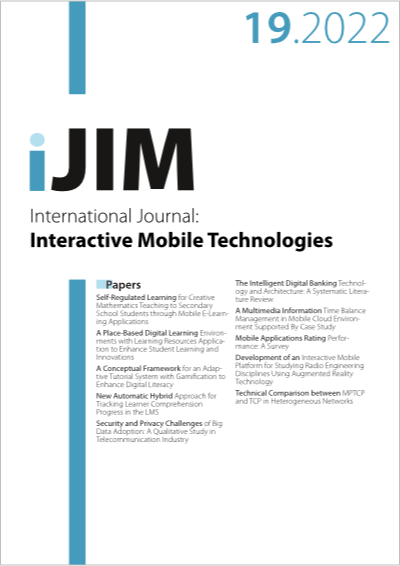Development of an Interactive Mobile Platform for Studying Radio Engineering Disciplines Using Augmented Reality Technology
DOI:
https://doi.org/10.3991/ijim.v16i19.32373Keywords:
mobile interactive platform, mobile application, augmented reality, Unity3D, physics, radio engineering disciplinesAbstract
Currently, we are witnessing the active introduction of modern digital technologies in the field of education. One of the main reasons for this was the transition to distance learning due to the global COVID-19 pandemic. More and more virtual labs, virtual textbooks, as well as educational platforms that allow students to acquire the necessary skills and abilities remotely using the Internet, are being used in the educational process.
The most promising educational platform is an interactive mobile learning platform. It has several advantages, among which one can especially single out the convenience of learning due to its interactivity and organization of the studied material. The application of augmented and virtual reality allows for increasing the effectiveness of classes. These technologies provide another level of interaction and material perception by students. However, VR and its high level of immersion require special equipment and more actions from the user while AR is cheaper and more affordable, but still interactive and has great visual aids. The aim of the paper is to demonstrate how augmented reality can be used for radio engineering disciplines on the example of an interactive mobile platform.
This article discusses the process of developing a mobile platform that allows studying the material of radio engineering courses using augmented reality technology. The work also contains the results of a survey conducted among the students who used it as a part of their class activities. In addition, sections of the article contain a description of the project development process, its structure, international experience, and the conclusions.
Downloads
Published
How to Cite
Issue
Section
License
Copyright (c) 2022 Dana Tsoy, Yevgeniya Daineko, Madina Ipalakova, Bagdat Kozhakhmetova, Altay Aitmagambetov, Aigul Kulakayeva

This work is licensed under a Creative Commons Attribution 4.0 International License.



